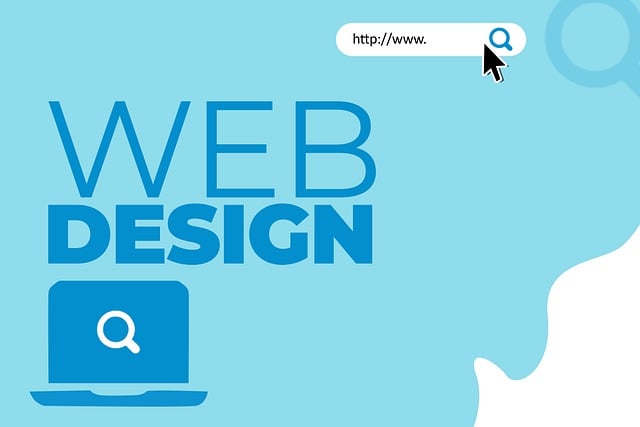The digital realm has transformed web design, with online portfolios showcasing designers' creativity and technical skills. Businesses can explore diverse styles, from minimalist to dynamic platforms, and compare approaches in areas like responsive design, e-commerce, and full-stack applications. Understanding design preferences is vital for creating websites that align with brand identity and target audiences, ensuring visual appeal and functionality across devices. Modern trends include Minimalism and High-Impact Informative Platforms, catering to distinct business needs. Brands must evolve beyond outdated designs to stay competitive, focusing on responsive development tailored to local businesses' unique requirements. Successful online presence involves navigating current trends and implementing responsive design for enhanced user experience and SEO rankings. Examining e-commerce and web application portfolios offers valuable insights into creating visually stunning, functional platforms that drive conversions and streamline operations. When reviewing portfolios, assess designers' understanding of brand and industry, their proficiency in responsive development, back-end skills, and ability to create engaging, practical online platforms.
At Salterra, we recognize the power of online portfolios in shaping your web design journey. These digital showcases offer a glimpse into designers’ creative worlds, allowing you to discern what truly resonates with your project. By meticulously noting preferences—from minimalist aesthetics to impactful informational platforms—you can clearly define your vision. We stress the importance of staying current; outdated designs have no place in modern marketing. This article guides you through unlocking design trends, evaluating portfolios, and embracing responsive website development for a successful online presence.
- The Power of Online Portfolios in Web Design Discovery
- Unlocking Your Vision: Understanding Design Preferences
- Modern Minimalism vs. High-Impact Informative Platforms
- Outdated Designs in Marketing: Why Avoid Them?
- Responsive Website Development: A Key to Success
- Navigating Design Trends for Effective Online Presence
- Case Studies: Successful Online Presentations by Companies
- Tips for Evaluating Web Designers' Work and Your Project's Direction
The Power of Online Portfolios in Web Design Discovery

The digital realm has transformed how we discover and engage with web designers, and online portfolios play a pivotal role in this evolution. These virtual showcases offer a window into the creative prowess and technical skills of designers, allowing potential clients to explore diverse styles and capabilities. By browsing through these portfolios, businesses can gain valuable insights into the latest trends in web design, from sleek minimalist aesthetics to dynamic, feature-rich platforms. This visual exploration fosters an informed decision-making process, ensuring that companies choose a style aligned with their brand identity and project goals.
Moreover, online portfolios facilitate a comparative analysis of different designers’ approaches to responsive website development, e-commerce website development, and full-stack web application development. Clients can assess the designer’s ability to translate visual appeal into functional, user-friendly interfaces. This strategic exploration empowers businesses to make educated choices, ensuring their websites not only captivate but also deliver, aligning with the ever-evolving standards of modern digital marketing.
Unlocking Your Vision: Understanding Design Preferences

Unlocking Your Vision: Understanding Design Preferences
In the dynamic world of web design, your online presence serves as a reflection of your brand identity and business goals. As you explore designer portfolios, pay close attention to what captures your imagination. Is it the clean lines and minimalistic aesthetics that scream modern elegance, or perhaps the bold visuals and interactive elements that promise an engaging user experience? This internal guidance is crucial when envisioning your ideal website. Remember, a successful web design goes beyond aesthetics; it should align seamlessly with your marketing strategy, ensuring a responsive website development that caters to users across various devices.
Whether you’re aiming for an e-commerce website development where functionality and user engagement reign supreme or seeking a robust web application development that drives business processes, understanding your design preferences is the first step towards creating a digital platform that resonates with your target audience. This process allows you to filter through styles, from Front-End Website Development that focuses on visual appeal to back-end solutions like Web Application Development that power complex functionalities, ultimately guiding you in crafting a website that not only looks fantastic but also performs flawlessly.
Modern Minimalism vs. High-Impact Informative Platforms

In today’s digital landscape, businesses are presented with a plethora of web design trends to choose from when crafting their online presence. Two prominent approaches that have gained significant traction are Modern Minimalism and High-Impact Informative Platforms. Each style offers unique advantages tailored to different business needs.
Modern Minimalist designs prioritize simplicity, clean lines, and a reduced color palette, focusing on functionality and easy navigation. This approach often translates to faster loading times, improved user experience, and a visually appealing interface that captivates users without overwhelming them. On the other hand, High-Impact Informative Platforms are data-rich environments designed to engage visitors through dynamic content, interactive elements, and compelling storytelling. Such platforms excel at conveying complex information in digestible formats, making them ideal for businesses aiming to educate their audience while driving conversions. When considering your website’s design, it’s crucial to align your choice with your brand identity and target audience, ensuring a harmonious blend of aesthetics and functionality, such as those offered by expert website development contractors specializing in responsive website development, including WordPress website development services tailored for local business needs.
Outdated Designs in Marketing: Why Avoid Them?

In today’s digital landscape, where user experiences and interactive website development reign supreme, outdated designs can hinder your brand’s online presence. Using aged visual aesthetics or clunky navigation structures may have been acceptable years ago, but they fail to engage modern audiences who expect sleek, responsive website development that adapts seamlessly to any device. A website reflecting old trends not only appears unprofessional but also risks alienating potential clients who are accustomed to dynamic and immersive digital experiences.
Moreover, staying away from outdated ideas in marketing ensures your brand remains competitive and relevant. By embracing contemporary design principles, you can create a captivating online environment that encourages user interaction and boosts conversion rates. Whether it’s through affordable website development tailored to your business needs or seeking local website development services known for their innovation, discarding old approaches paves the way for a successful digital marketing strategy centred around a responsive website that leaves a lasting impression.
Responsive Website Development: A Key to Success

In today’s digital era, a website is often the first point of contact between a business and its potential clients. This makes responsive website development a crucial aspect of any successful online presence. A responsive design ensures your site adapts seamlessly to different screen sizes and devices, be it a desktop computer, tablet, or smartphone. This adaptability is not just about aesthetics; it significantly improves user experience, leading to longer visits, higher engagement rates, and better conversion results.
By embracing professional website development that prioritises responsiveness, local businesses can effectively reach their target audience. A well-crafted responsive site provides a consistent experience across all platforms, which is essential for building a strong online reputation. Moreover, it showcases the ability of local website development services to create modern, functional, and visually appealing sites tailored to the unique needs of each business, thereby enhancing their digital marketing strategy.
Navigating Design Trends for Effective Online Presence

In today’s digital era, navigating design trends is crucial for establishing an effective online presence. A responsive website development approach is essential to ensure your site adapts seamlessly to various devices and screen sizes. This flexibility not only provides a user-friendly experience but also boosts SEO Website Development rankings, as search engines favor mobile-optimized websites. By staying abreast of the latest design trends, businesses can create visually appealing and functional online platforms that engage users and effectively communicate their brand identity.
Local Website Development Services often leverage these trends to cater to specific business needs. Whether it’s a minimalist aesthetic or a feature-rich informative platform, designers focus on creating modern, impactful designs. Avoiding outdated ideas is key; businesses should aim for contemporary solutions that align with their marketing strategies. By combining responsive design with the latest trends, Website Development for Businesses can establish a strong online presence, attract and retain users, and ultimately drive growth.
Case Studies: Successful Online Presentations by Companies

Many companies have successfully leveraged their online presence to showcase their brand and services, setting a benchmark for others in their industry. When evaluating web design portfolios, examining case studies of successful online presentations can offer valuable insights. For instance, e-commerce websites that prioritize user experience through intuitive navigation, stunning visuals, and seamless transactions are not only aesthetically pleasing but also drive conversions. These sites often employ responsive website development to ensure a consistent look across all devices, enhancing the customer journey.
Additionally, web application development has seen remarkable growth, with companies creating dynamic platforms that cater to specific business needs. From content management systems to custom-built solutions, these applications streamline operations and provide robust functionality. By studying these successful online presentations, businesses can gain a clear understanding of how to transform their digital presence, whether it’s for an e-commerce website development or crafting a specialized web application tailored to their unique requirements.
Tips for Evaluating Web Designers' Work and Your Project's Direction

When evaluating web designers’ portfolios, pay close attention to their ability to cater to your project’s unique needs. Look for a clear understanding of your brand and industry, reflected in their design choices. A good designer should be able to transform your ideas into a visually appealing and functional online presence, considering both the aesthetic and practical aspects.
One key aspect is the mastery of responsive website development, ensuring your site adapts seamlessly across various devices and screen sizes. This is crucial for providing an optimal user experience and enhancing SEO Website Development. Additionally, assessing their back-end website development skills is vital, as a robust technical foundation is essential for future growth and scalability.
